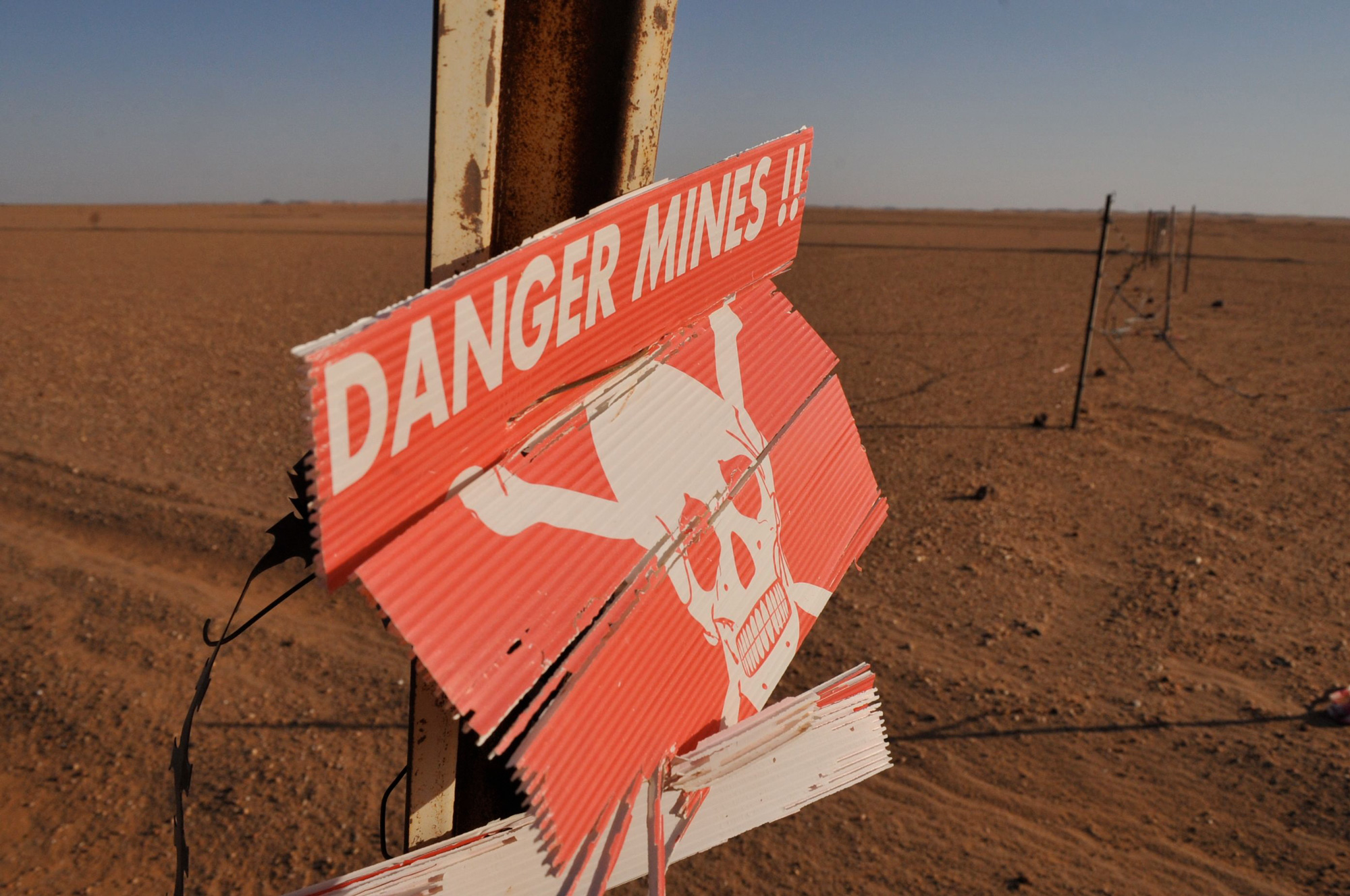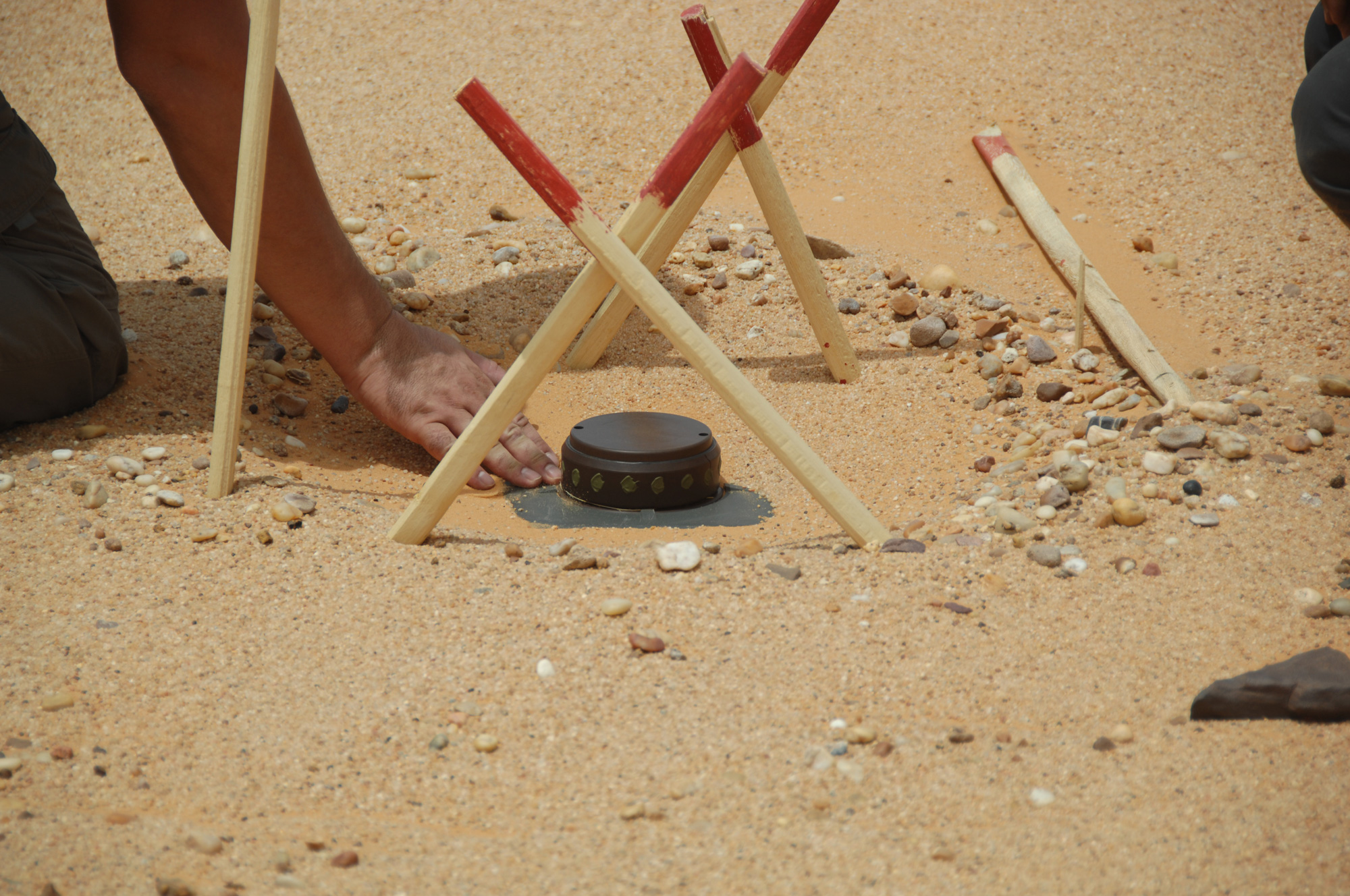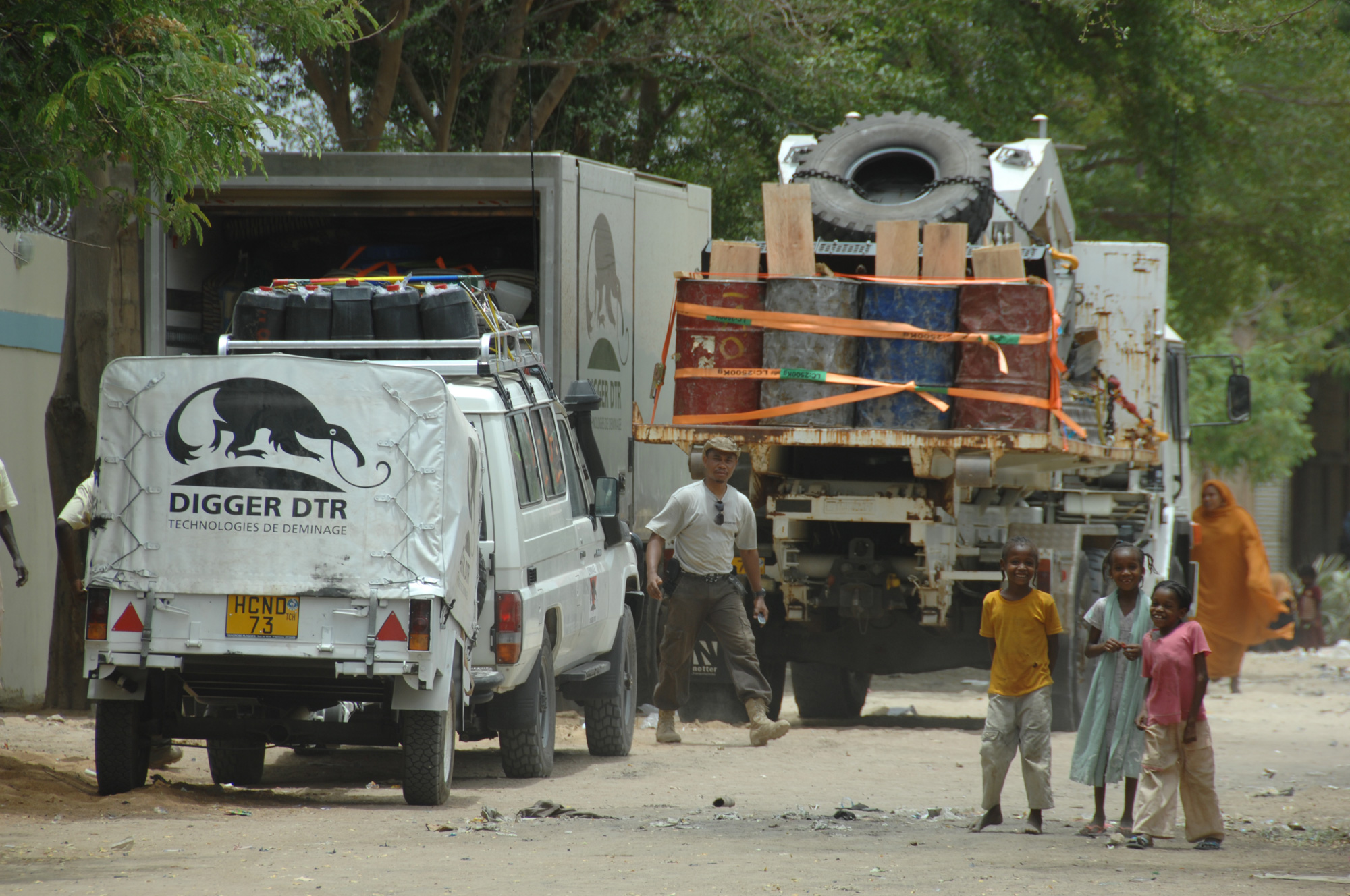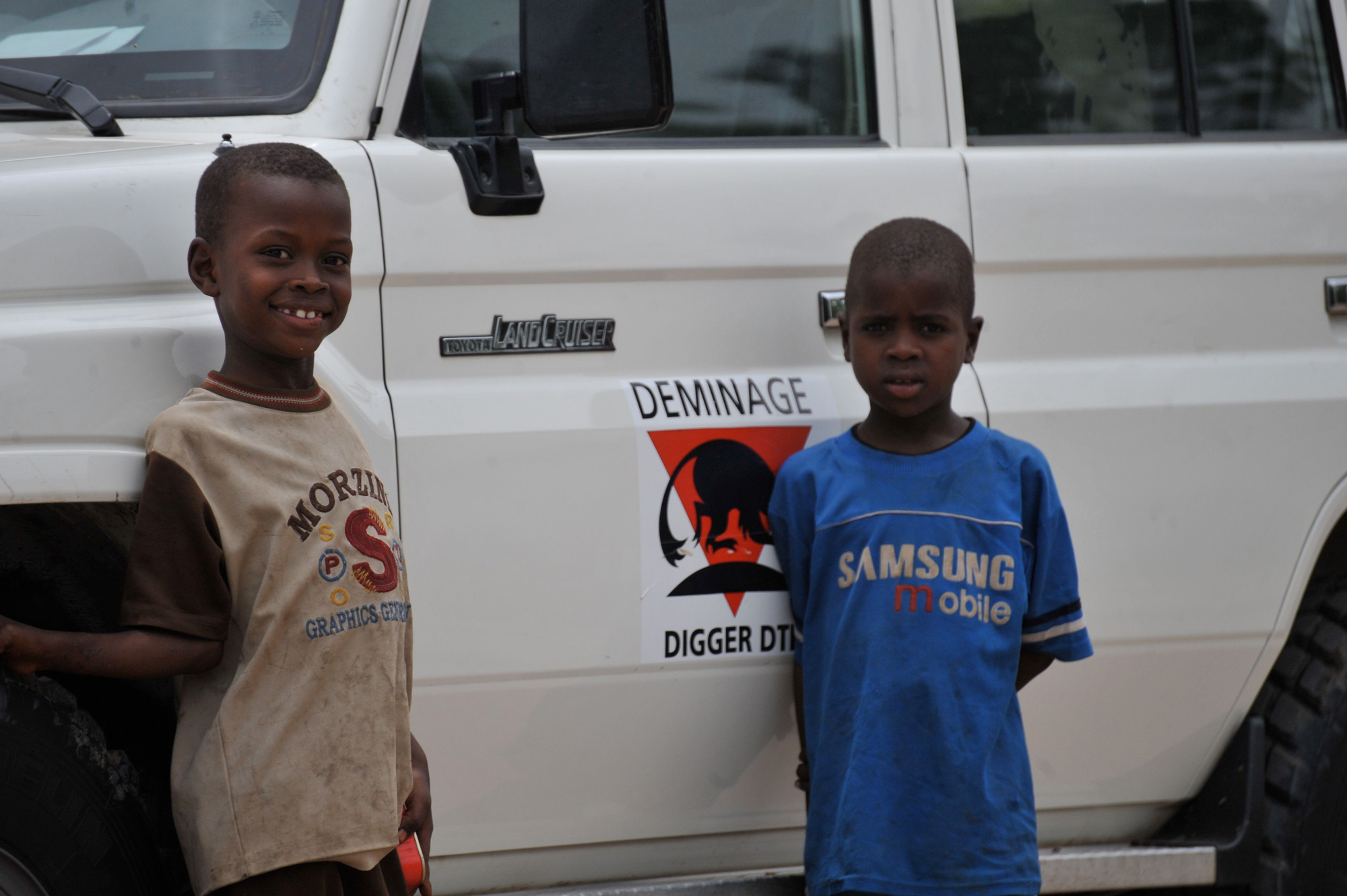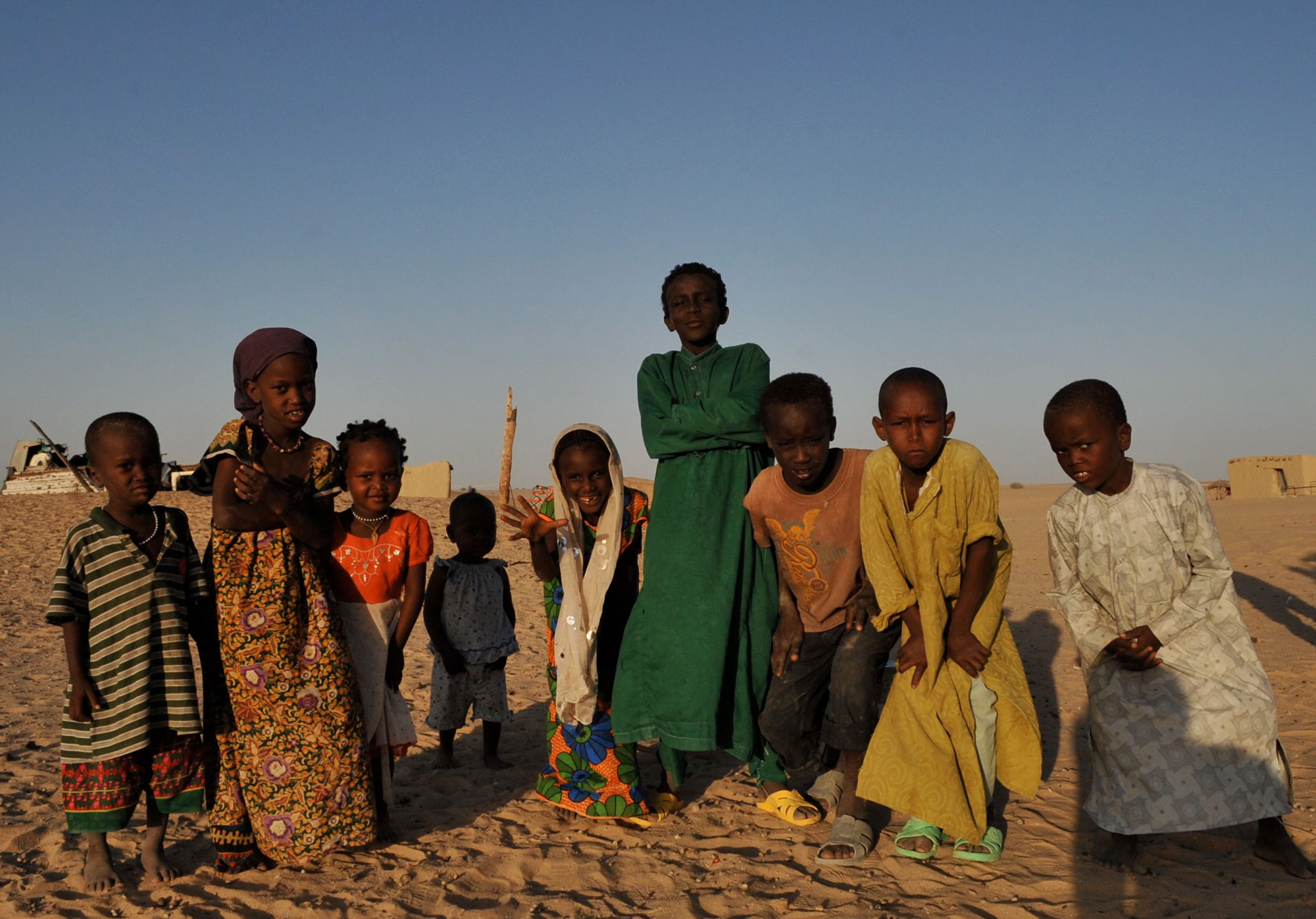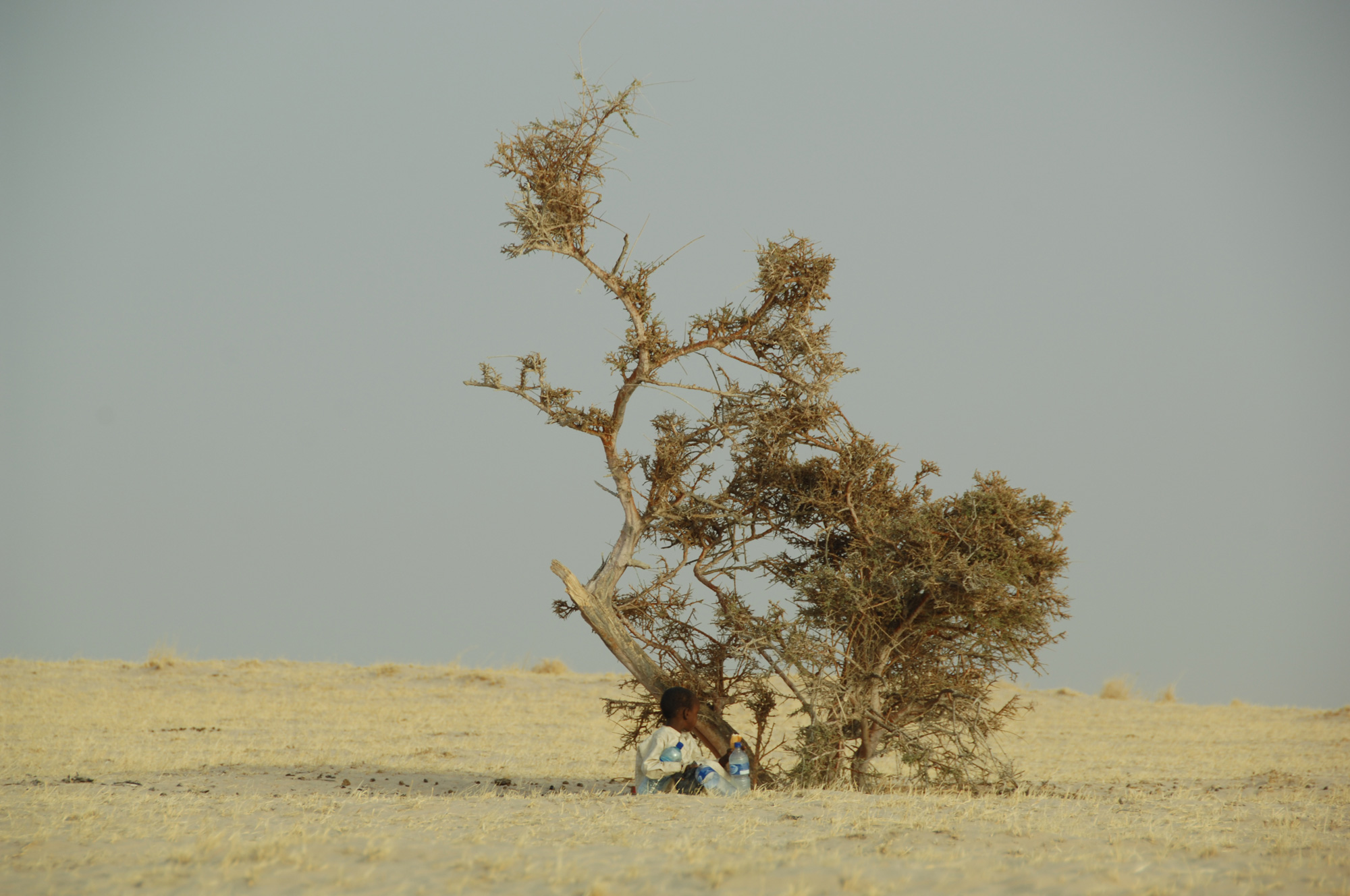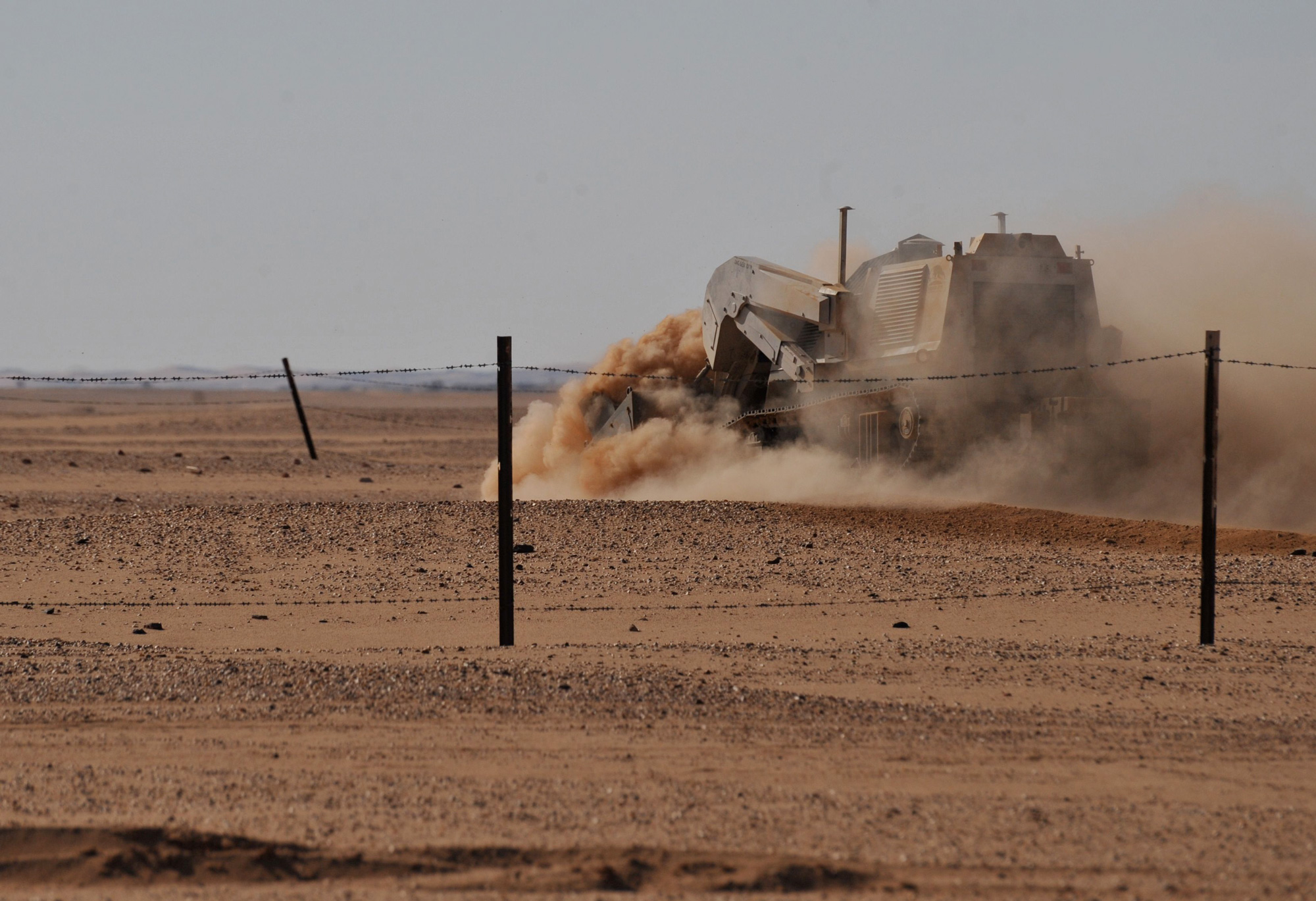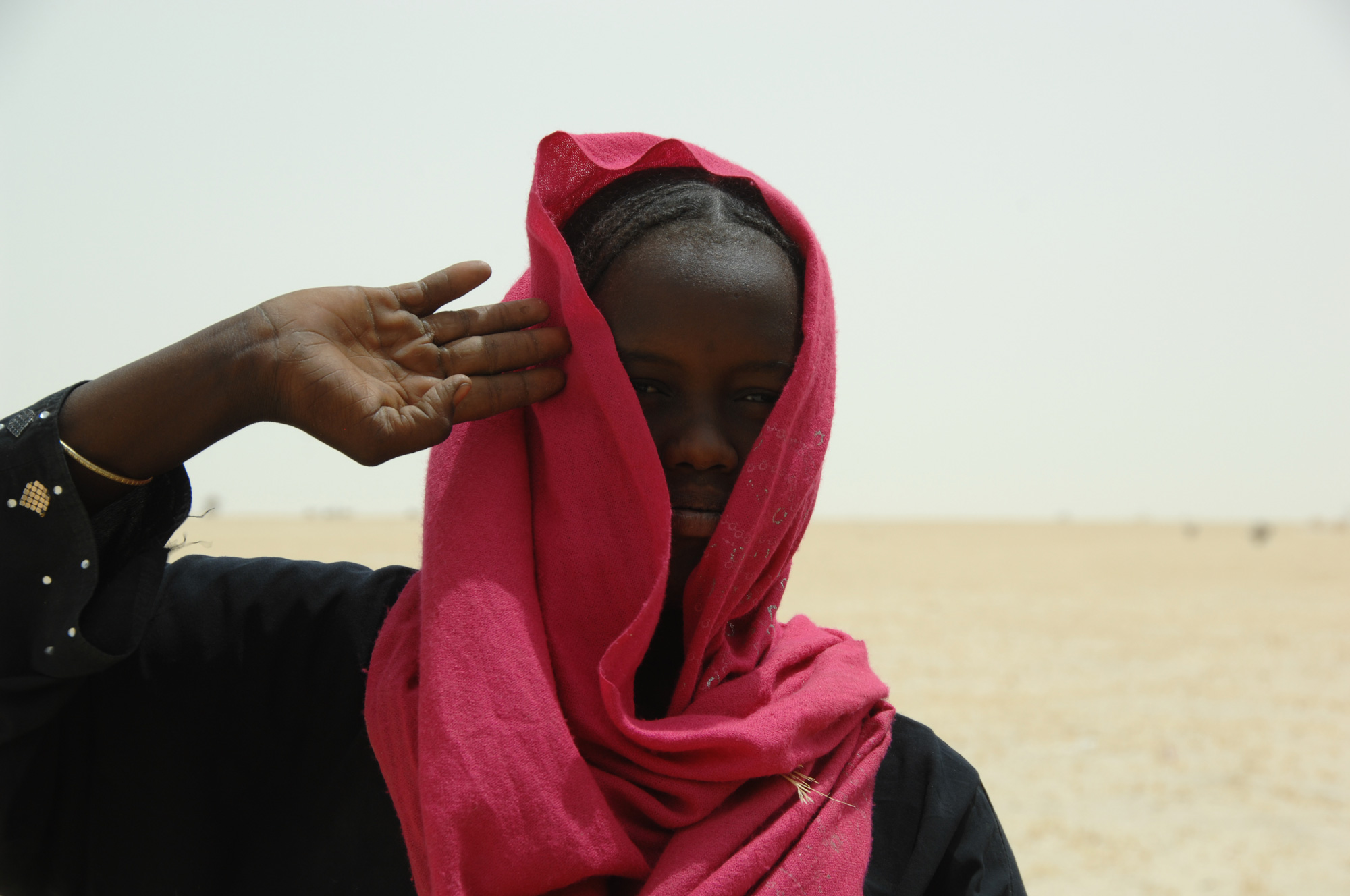In 2011, the Digger Foundation organised and carried out a major demining operation in Ouadi Doum in the north of Chad, on the site of a former Libyan military base which, since its recapture by the Chadian army in 1987, had remained at the centre of a mine field averaging 100 m wide and stretching for 47 km; considered the largest known minefield in the country.
In 2010, an estimated 300,000 Chadians were living in these high-risk areas, mainly in the northern provinces, where most of the anti-personnel mines and anti-tank mines (manufactured in the United States and several European countries) and unexploded ordnance are located. These devices are mainly scattered outside minefields and were never marked or fenced off at the time of the signing of the Ottawa Treaty in 1998. Mines often plague the few areas suitable for livestock and farming in this desert region. They impede movement, especially of nomadic herders, decimate camel herds and restrict access to oases. Besides adults and civilians, the vast majority of victims are children. In the 2000s, demining programmes often came to a halt due to lack of funding.
The operation was conducted over ten months by the Digger Foundation, with a team of about ten people. It was completely funded by the Swiss Agency for Development and Cooperation (SDC), for a total of 1.125 million Swiss francs. The cost of the manufacture of this machine, not included in the SDC budget, was covered by fundraising efforts through the Foundation.
Designed in collaboration with the Chadian National Demining Center, the project consisted of direct demining of the lowest-risk areas on both sides of the access roads to the village of Ouadi Doum, and regular surveys to monitor the manual demining carried out by the British NGO MAG in the high-risk areas. As a result, safe access routes have been extended by several kilometres, allowing the safe passage of livestock. In total, 420,000 square metres were cleared. The high proportion of anti-tank mines (up to one third of the total) prevented the use of the machine to clear the entire area, although the strength of the machine itself to withstand the explosion of such mines was tested and demonstrated.
To achieve this dual objective, the Digger Foundation used one of its Type D-3 demining machines, armoured, remotely controlled, equipped with cameras and, for the first time, with GPS-RTK technology allowing for very precise positioning. Another crucial part of the project was training local people in demining.
The operation proved to be a complete success, despite the extremely harsh conditions in which it took place and the logistical and supply problems, particularly in terms of fuel, aggravated by the simultaneous outbreak of the civil war in Libya.
